The Untold Story of the Mercedes C111-II

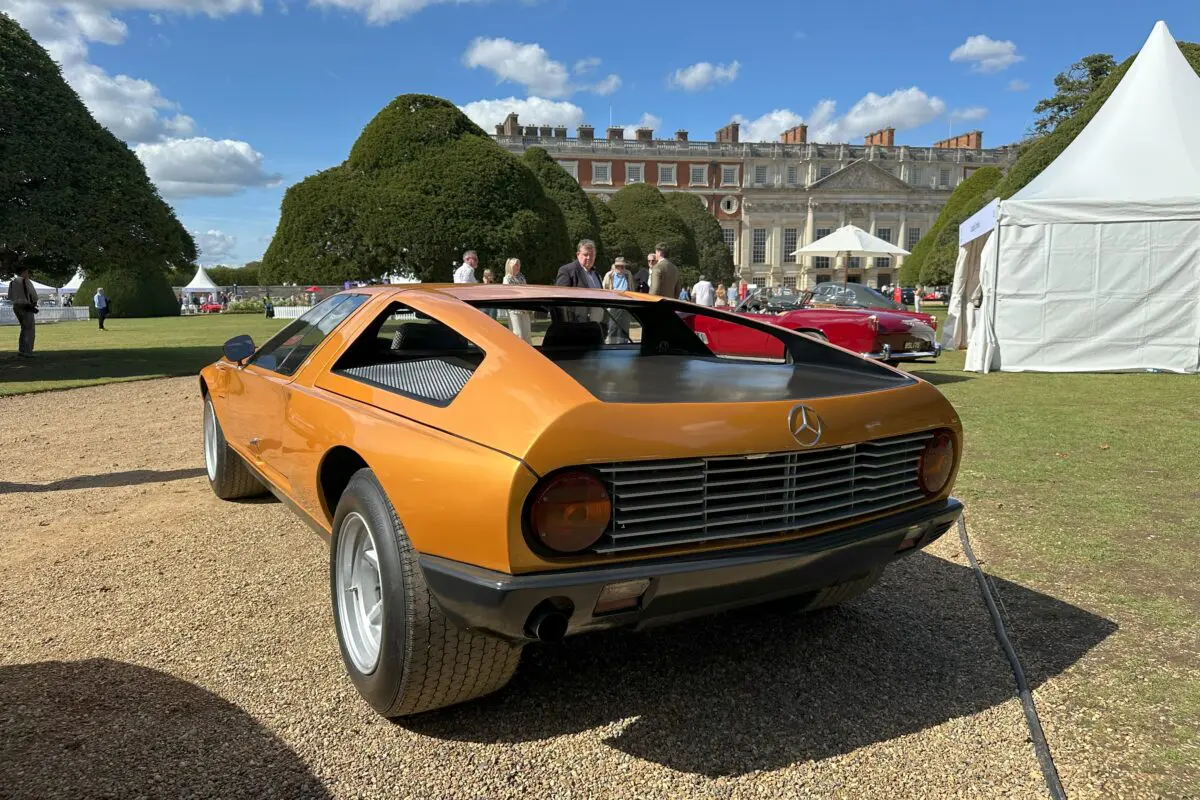
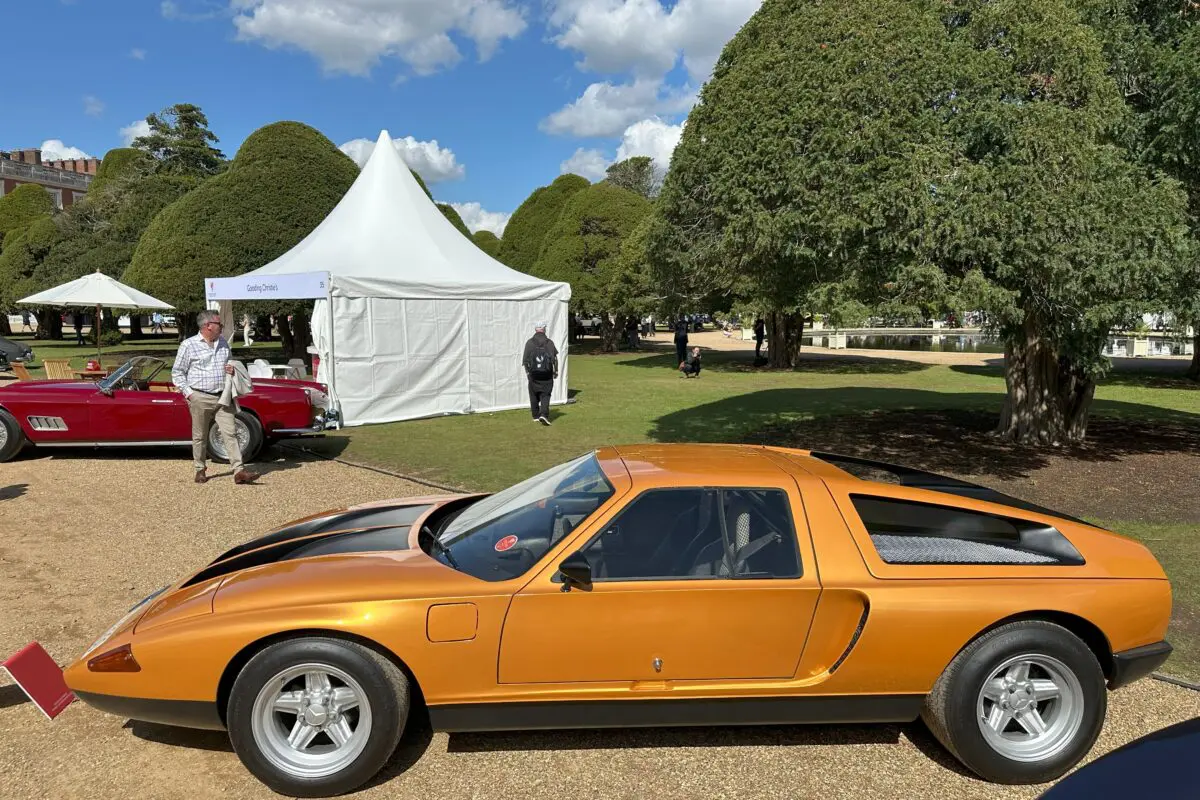
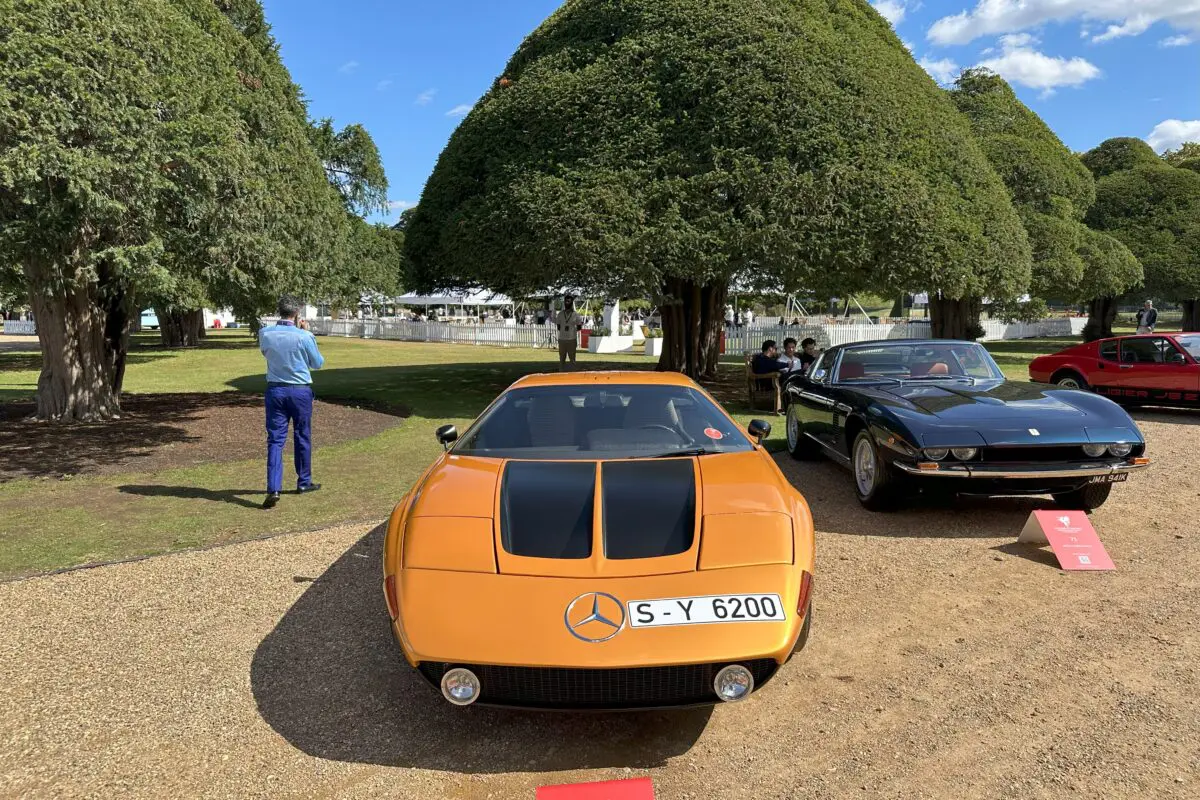
An extraordinary exhibit thrilled visitors to the Mercedes-Benz stand at the International Motor Show in Frankfurt am Main in September 1969: the C111.
Fascinating sports car icon and media favourite, the C111 was also a laboratory on wheels for the development of the Wankel rotary engine and for testing innovative new technologies. Moreover, and last but not least, this legendary record-breaking car was all this and much more.
Despite numerous orders, though, the car remained purely experimental and never entered production.
However, it did spawn several exciting follow-ups.
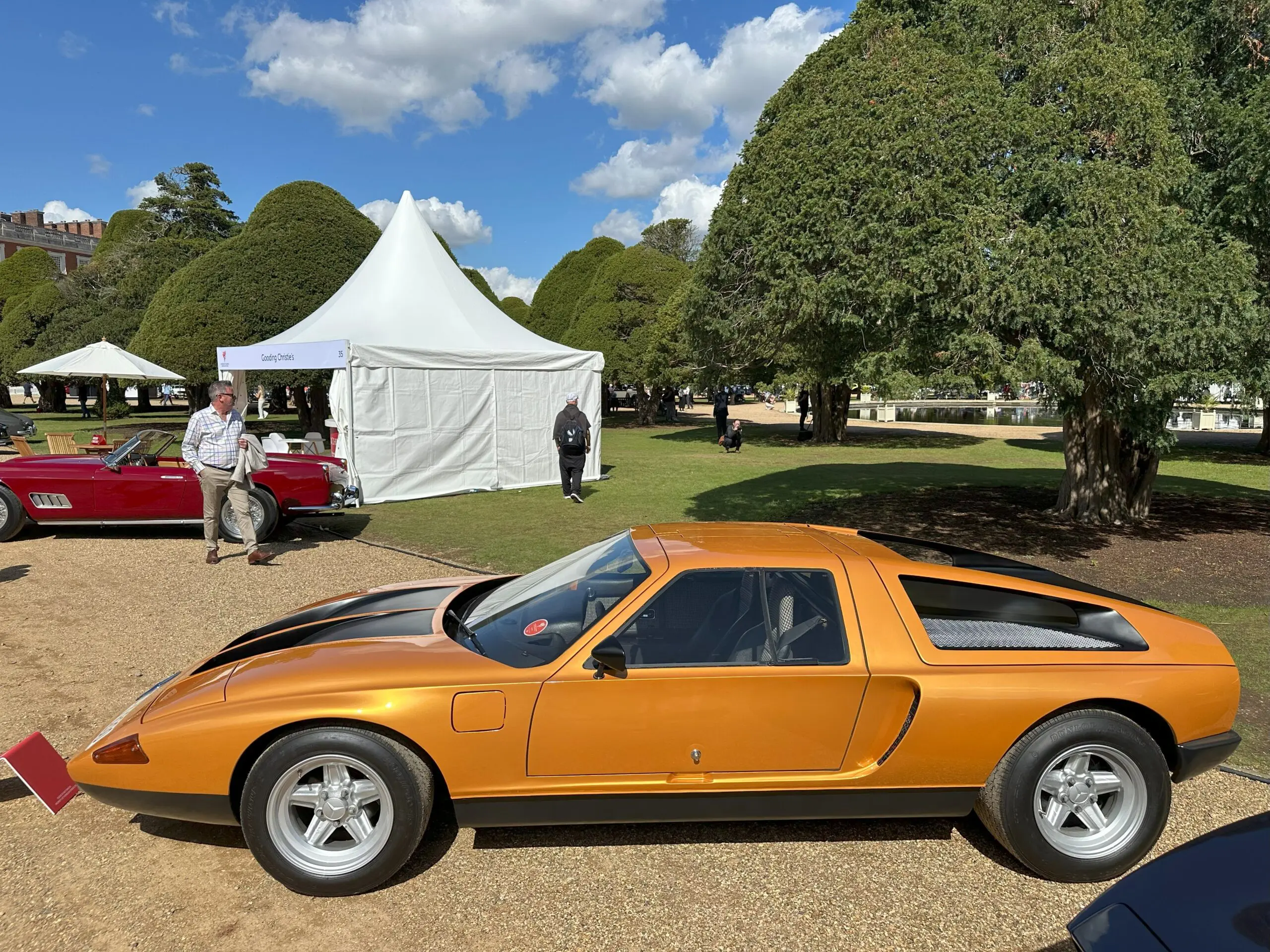
We saw this iconic and very rare 1970 Mercedes-Benz C 111-II at the 2025 Concours of Elegance held at Hampton Court Palace. This car was one of many that grabbed my attention. You can see much more Concours of Elegance content here, and videos on our YouTube Concours of Elegance playlist.
The 1970 Geneva Debut
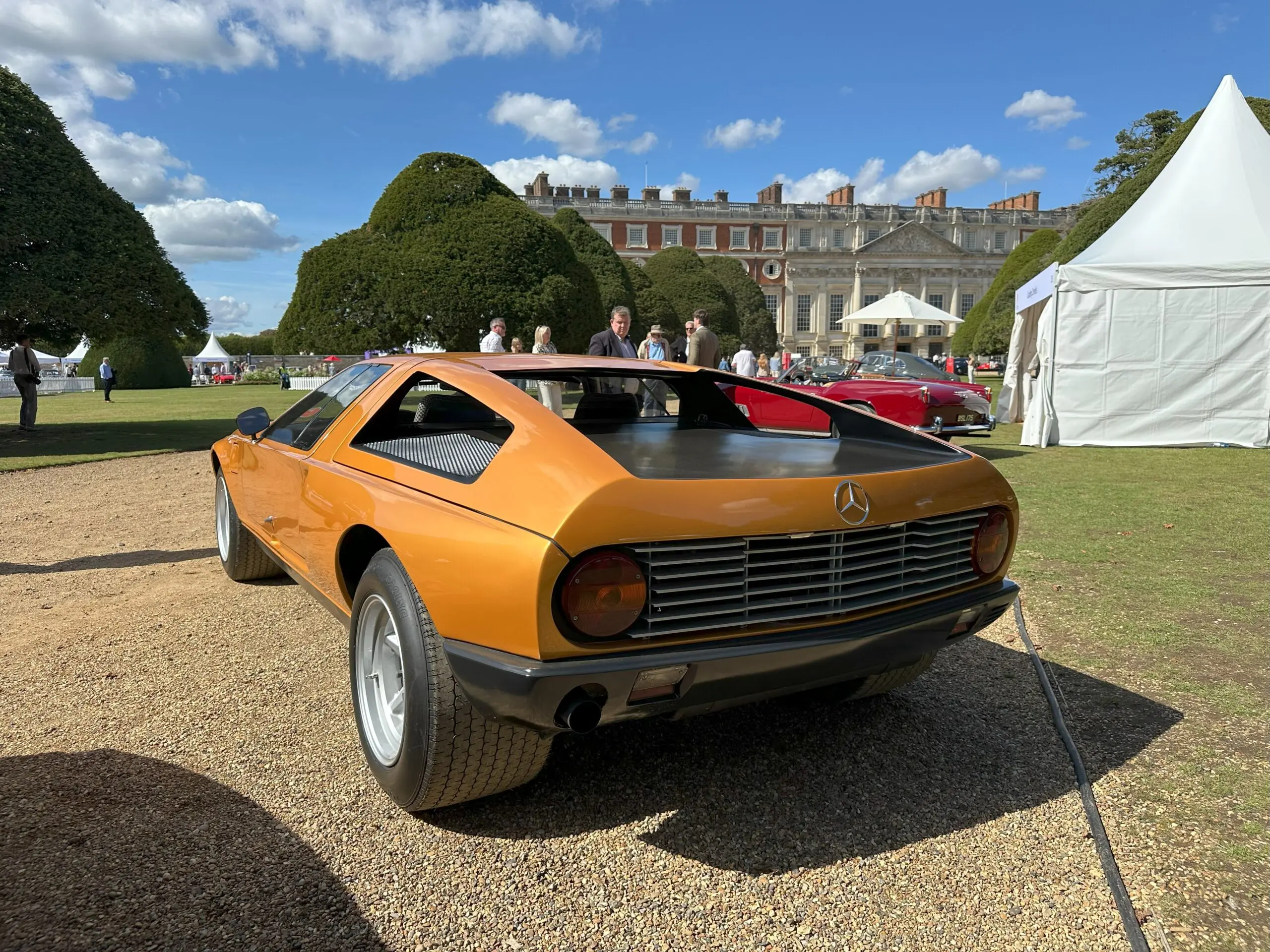
At the Geneva Motor Show in 1970, the revised C 111-II was presented with a four-rotor Wankel engine. It produced 350bhp and a top speed in advance of 170 mph.
This version also served as the basis for a V8 model of the C 111 using the standard series M 116 engine. It produced 200bhp.
Engineering the Wankel Wonder
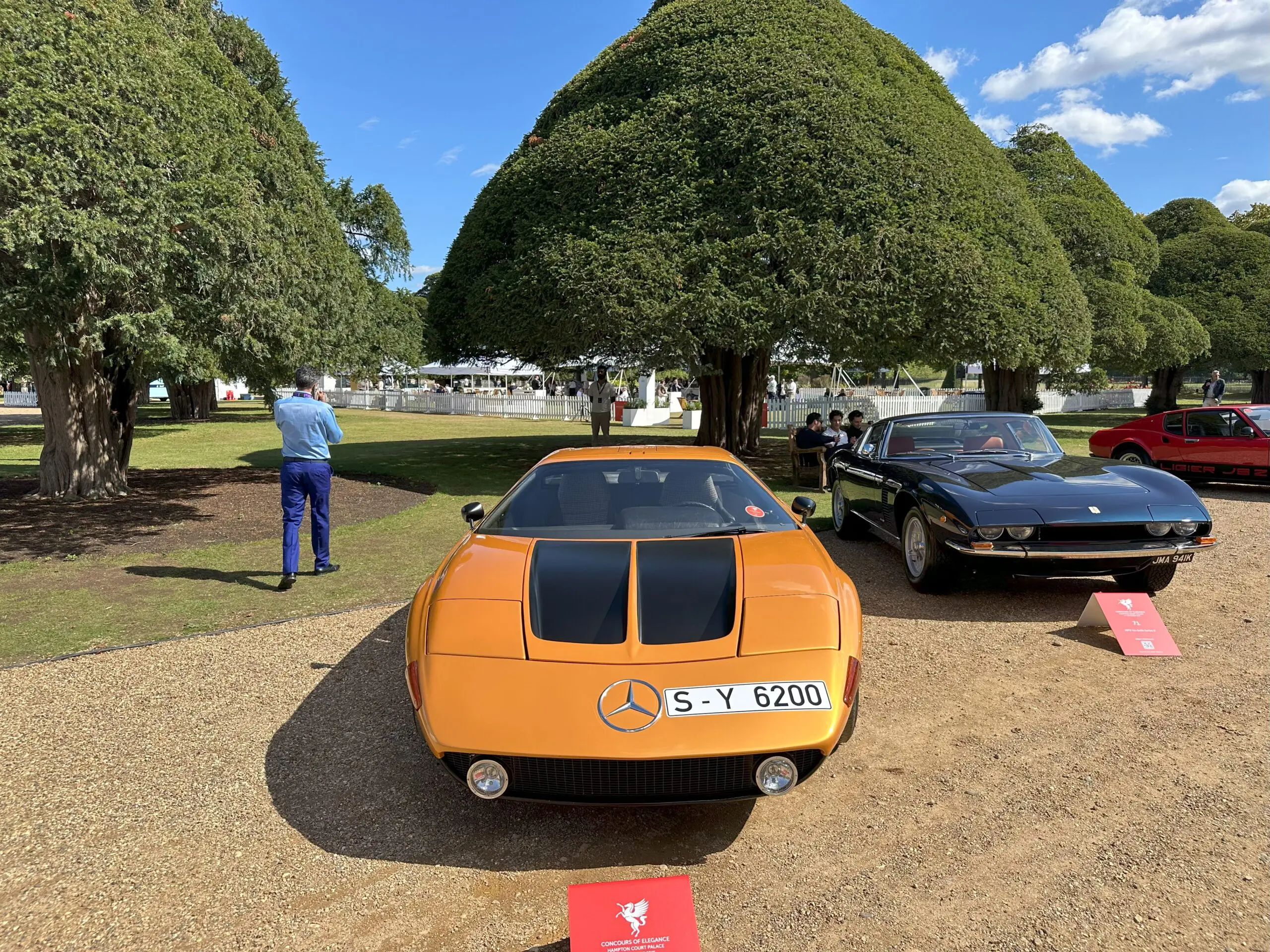
The Mercedes-Benz C 111-II you see before you is the four-rotor Wankel variant. The rotary layout contributed to an impressively smooth power delivery, with fewer vibrations than a conventional inline or V-configuration engine.
Cooling and lubrication were specially engineered to cope with the rotary’s unique demands. Also, the engine featured specialised aluminium housings and precision-machined rotors.
Lightweight Strength and Cutting-Edge Design
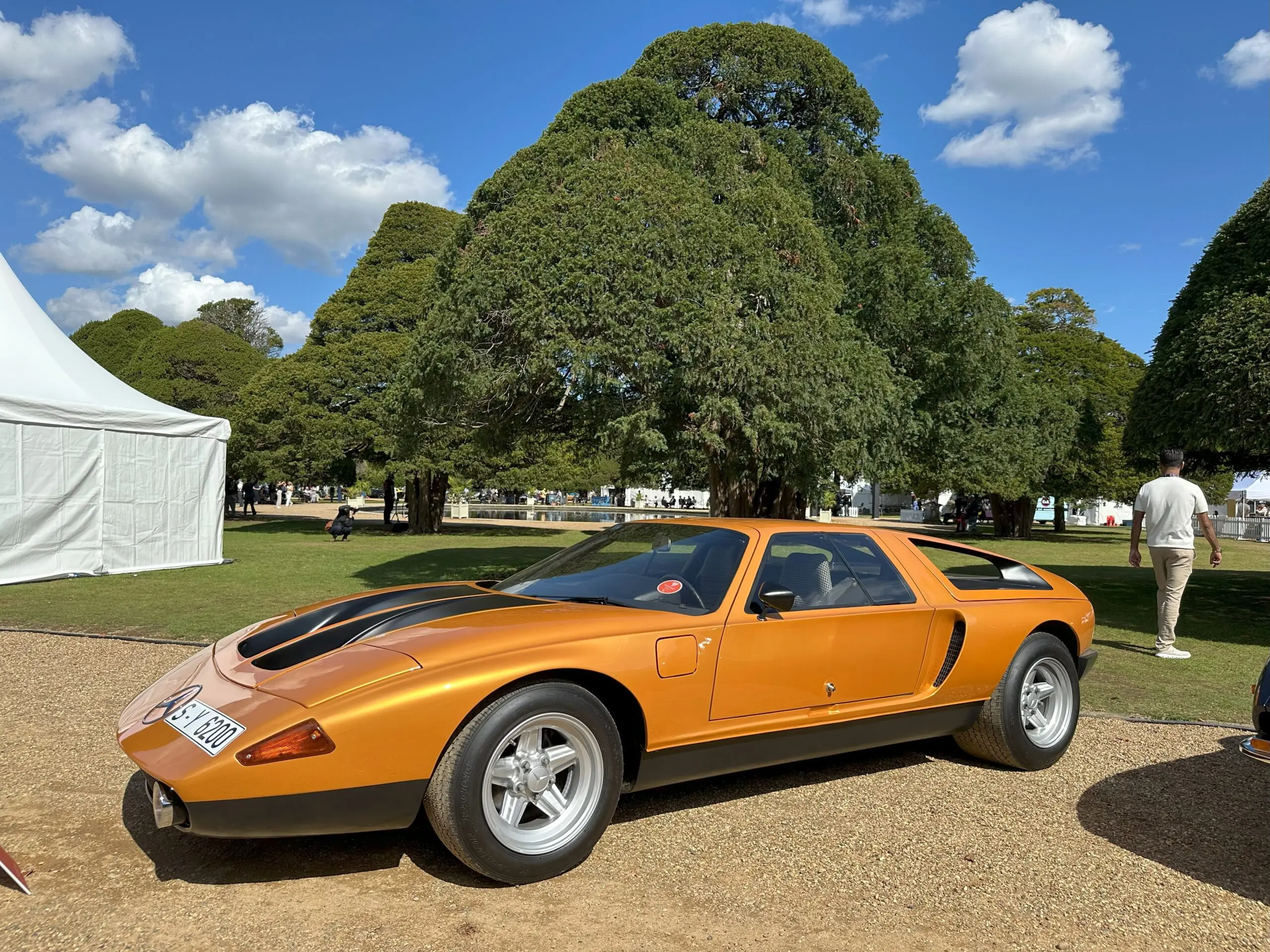
The C 111-II’s chassis was a tubular spaceframe, offering exceptional rigidity while remaining light enough to maximise performance.
Independent suspension was fitted on all four wheels, with double wishbones at the front and a multi-link set-up at the rear. This was combined with coil springs and telescopic dampers.
The chassis also incorporated innovative safety and structural design elements. Reinforcements were placed strategically to cope with the high stresses generated by the rotary engine. Disc brakes were fitted all round.
From Experiment to Record-Breaker
A number of record-breaking variants were subsequently created. They included the C 111-II D in 1976 and the Mercedes-Benz C 111-III between 1977 and 1978. Both were fitted with a five-cylinder turbodiesel engine. However, the C 111-IV of 1979 used a 500bhp 4.8-litre turbocharged V8 petrol unit.
Specifications
Engine: 2400cc/four-rotor Wankel rotary/naturally aspirated
Transmission: Five-speed manual, RWD
Power: 350bhp
Torque: 363lb ft
Top Speed: 186mph
0–60mph: 4.8secs
Weight: 1240kg
What do you think of this car?
We love the design. A very cool car indeed.
Sign for our newsletter to be notified about our competitions, and you could win, in the future, a complimentary pair of tickets to this wonderful show.

Do also follow us on YouTube, give us a like and follow us on our social media channels. We are on Facebook, Instagram, Twitter/X, and TikTok.
Read more on
- Beautiful Cars
- Car Galleries
- Car Shows
- Car Stories
- Classic Cars
- Concept Cars
- Cool Cars
- Desirable Cars
- Iconic Cars
- The Cars

Advertise your Car Show on My Car Heaven.
Get in touch and we can make that happen for you.
Find Out MoreRelated Stories
Advertisement Advertisement
Advertisement Advertisement
Advertisement Advertisement
Advertisement Advertisement
Advertisement




